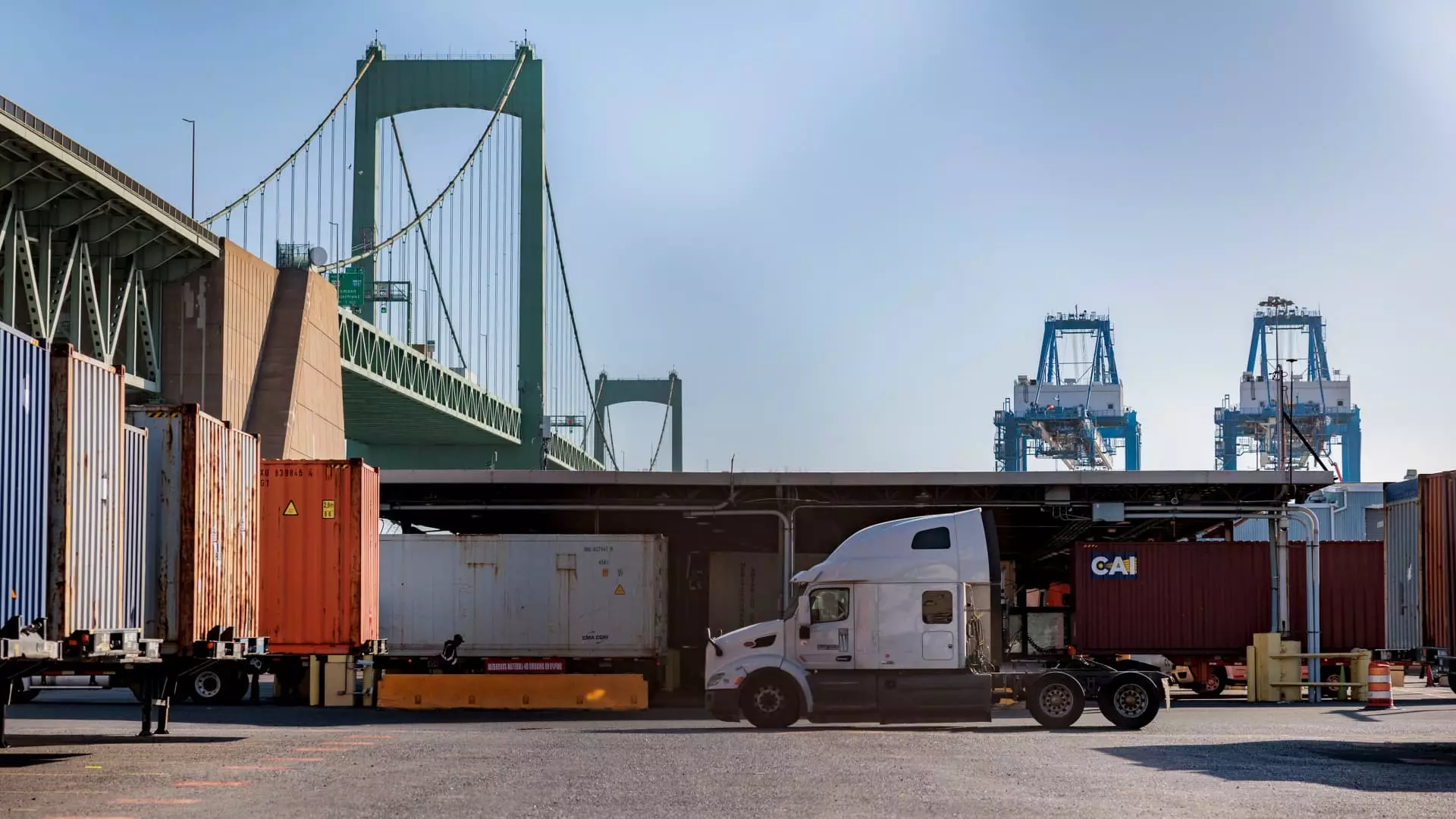As the Trump administration embarks on a controversial tariff strategy, it’s time to critically assess the implications of such a fiscal approach on the larger economic landscape. Specifically, the ambitious notion of replacing the federal income tax solely through tariffs raises several red flags that deserve thorough analysis. While tariffs may seem a viable alternative to income taxes, the feasibility of such a transition may be largely illusory.
Historically, tariffs served as significant revenue generators for the U.S. government, particularly in the 19th century, when the economy was structured quite differently than today. However, the fiscal environment of contemporary America is markedly altered—a fact that becomes especially apparent when examining the current scale of government spending. In 2023, federal expenditure constituted an astounding 22.7% of the GDP, a sharp increase from the era when tariffs were the cornerstone of revenue generation. This shift signifies that merely relying on a 19th-century tax mechanism in the face of 21st-century governmental needs is not merely impractical; it borders on the absurd.
Furthermore, historical fiscal reliance on tariffs has taken a significant nosedive over the last seventy years. Current records show that tariff revenue rarely surpasses 2% of total federal revenue annually, highlighting how the tax landscape has evolved. For instance, during fiscal year 2024, only about 1.57% of total revenue came from tariffs, a drastically low figure when juxtaposed against individual income taxes, which generated approximately $2.2 trillion in the same period.
The skepticism voiced by experts like Alex Durante and Erica York of the Tax Foundation warrants attention. Their analysis reinforces the idea that transitioning to a tariff-centric revenue model isn’t just impractical; it is downright unfeasible. The harsh reality is that to replace the income tax, tariff rates would need to skyrocket to astronomical levels, an outcome that would inevitably lead to diminishing returns—as higher rates deter importation and, therefore, diminish the taxable base itself.
Adding another layer of complexity, both noncompliance with tariff regulations and shifting consumer behaviors due to elevated import costs pose additional hurdles to achieving the desired revenue goals. Such factors only serve to underline the unsustainable nature of Trump’s ambitious plan. As scholars Kimberly Clausing and Maurice Obstfeld argued in their report, reliance on tariffs with such a limited tax base creates a vicious cycle that could quickly spiral into a fiscal nightmare.
The political ramifications of a tariff-heavy fiscal policy are equally concerning. While Trump’s administration has made early moves by signing orders to impose hefty tariffs on goods from Mexico, Canada, and China, the fluctuating nature of international relations introduces an element of unpredictability. For instance, by pausing tariffs on Canada and Mexico, Trump showcased the volatility inherent in such an approach. The retaliatory measures that countries like China have taken in response to U.S. tariffs could further complicate trade dynamics, resulting in a potential trade war that could prove damaging to the American economy.
What’s more, this pathway toward imposing tariffs could inadvertently lead to consumer hardship. As import costs increase, prices for consumer goods are likely to rise, ultimately burdening the very middle-class Americans that such policies aim to support. The very intent behind these tariffs—to fortify American manufacturing—could, paradoxically, create a burden on the broader economy as consumer purchasing power diminishes.
While President Trump’s call for an “all tariff policy” may resonate as a bold economic strategy, the underlying assumptions about revenue generation reveal critical flaws. Economic experts have highlighted the impracticality and potential repercussions of such a radical shift in tax policy. Instead of leaning on outdated fiscal models, it would be prudent for policymakers to pursue multi-faceted solutions that combine tariffs with other revenue streams while prioritizing international diplomacy to reduce trade tensions. The current economic landscape necessitates a comprehensive approach, one far more complex than merely placing tariffs in hopes of reshaping the federal tax structure.

